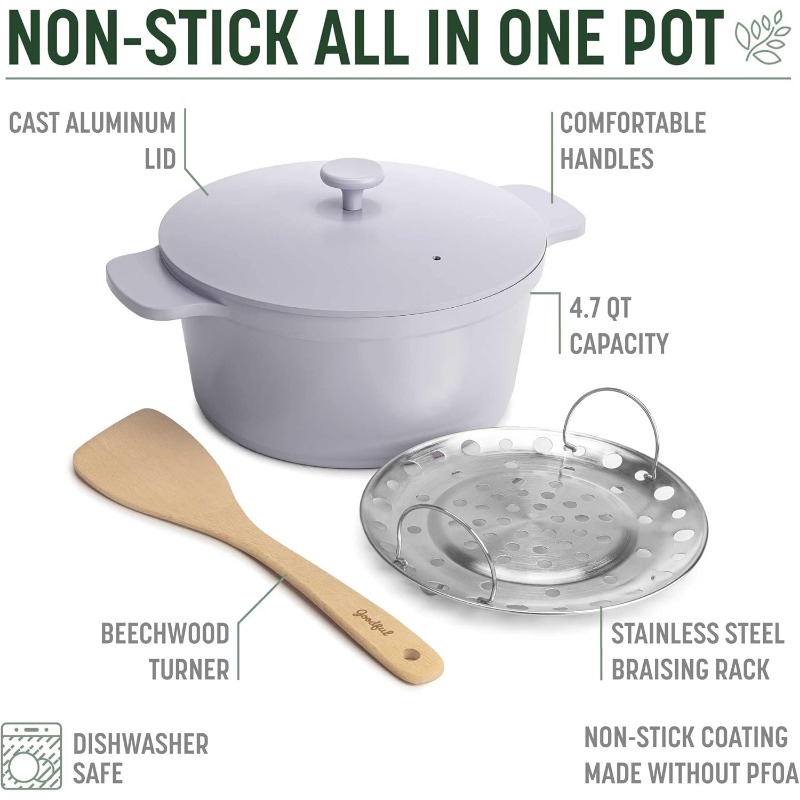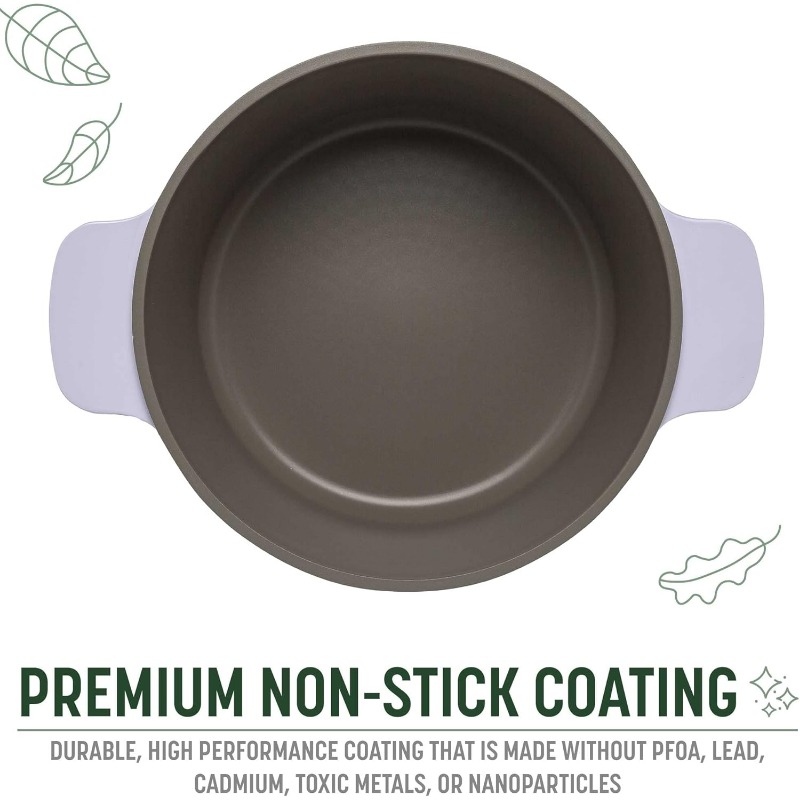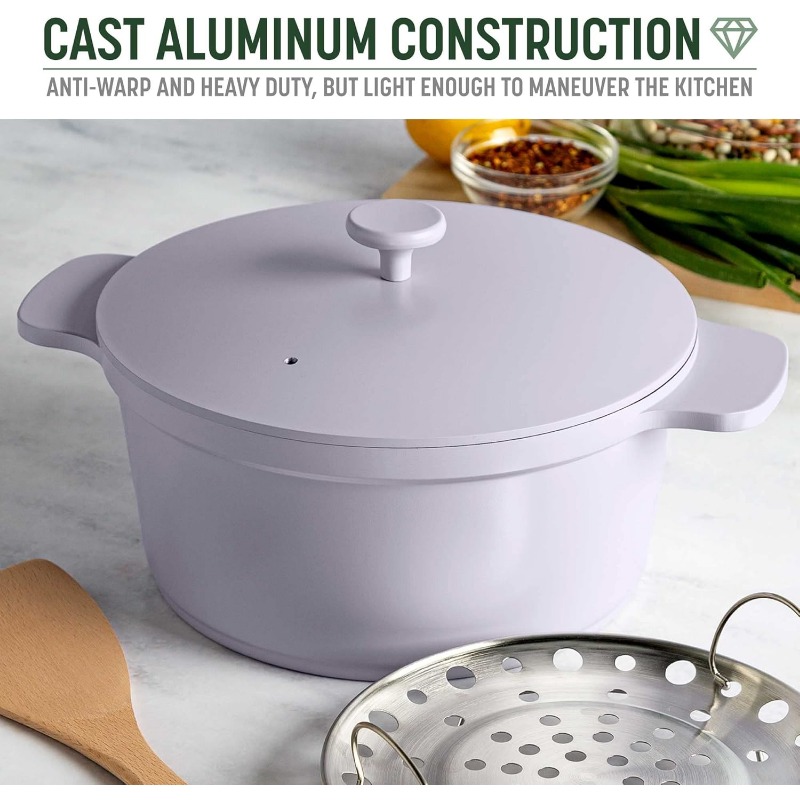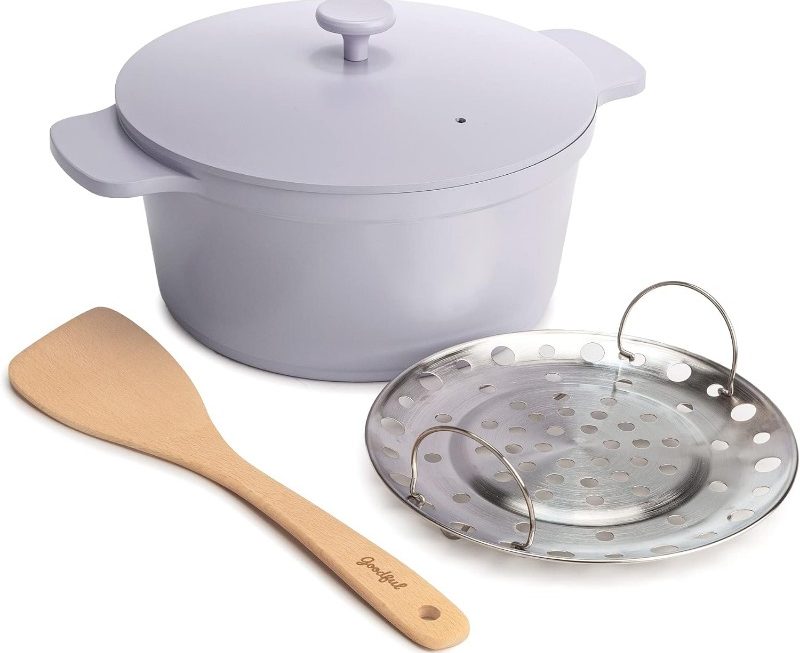Introduction
A Dutch oven roast is one of the most satisfying meals you can prepare. The cooking process is simple, but the results are extraordinary. This article will guide you through everything you need to know about Dutch oven roasting, including the techniques, recipes, and tips for success. Whether you are a beginner or a seasoned cook, you will find valuable information to help you master this delicious cooking method.

Understanding the Dutch Oven
What Is a Dutch Oven?
A Dutch oven is a thick-walled cooking pot, typically made from cast iron. Some versions are enameled, which makes them easy to clean and resistant to rust. Dutch ovens come with a heavy lid, which helps trap moisture and heat during cooking. This design makes it ideal for slow-cooking, braising, and baking. You can use it on the stovetop or in the oven, making it a versatile addition to your kitchen.
Why Use a Dutch Oven for Roasting?
Dutch ovens excel in roasting because they distribute heat evenly. This feature ensures that your food cooks uniformly. The heavy lid helps to lock in moisture, which keeps your roast juicy. Unlike traditional roasting pans, a Dutch oven can handle high temperatures and can go from the stovetop to the oven without any issues. This flexibility allows you to sear your meat first for added flavor before slow-roasting it.
Additionally, Dutch ovens can accommodate various ingredients. You can roast meats alongside vegetables, potatoes, and herbs. The flavors meld together beautifully, resulting in a rich, savory dish. If you love hearty meals, a Dutch oven roast is the way to go.
Preparing for the Roast
Selecting the Right Ingredients
When preparing a Dutch oven roast, selecting high-quality ingredients is essential. The type of meat you choose will significantly impact the final dish. Common choices include beef chuck roast, pork shoulder, or whole chickens. These cuts benefit from slow cooking, as they become tender and flavorful over time. Look for cuts with some fat marbling. The fat will melt during cooking, keeping the meat moist.
For vegetables, consider using root vegetables like carrots, potatoes, and onions. These vegetables add flavor and texture to the dish. You can also experiment with other vegetables, like bell peppers or mushrooms. Fresh herbs like rosemary, thyme, and parsley will enhance the taste of your roast. Choose herbs that pair well with your meat selection.
Preparing Your Dutch Oven
Before you start cooking, ensure your Dutch oven is clean and dry. If it is cast iron and not enameled, season it to maintain its non-stick surface. Seasoning involves applying a thin layer of cooking oil and heating it until it smokes. This process creates a protective layer on the cast iron, preventing rust and sticking.
Preheat your oven to the desired temperature. Most roasts cook well at 325°F to 350°F. This temperature range allows the meat to cook slowly and evenly. While the oven is preheating, you can prepare your ingredients.
Cutting and Marinating
Cut your meat into manageable pieces if necessary. For larger roasts, like a whole chicken or a big piece of beef, you may leave it whole. Season your meat generously with salt and pepper. You can also create a marinade using oil, vinegar, garlic, and your favorite herbs. Allow the meat to marinate for at least 30 minutes or up to overnight. This step will infuse flavor and help tenderize the meat.
Chop your vegetables into uniform pieces to ensure they cook evenly. You can toss them with olive oil, salt, and pepper for extra flavor. Keep in mind that some vegetables take longer to cook than others. Potatoes and carrots may need to go in earlier, while softer vegetables like zucchini can be added later.

The Roasting Process
Searing the Meat
One of the best steps in the Dutch oven roasting process is searing the meat. This step enhances the flavor of your roast and creates a beautiful brown crust. To sear your meat, place your Dutch oven on the stovetop over medium-high heat. Add a tablespoon or two of oil. When the oil is hot, carefully place the meat in the pot.
Allow the meat to cook undisturbed for several minutes. This technique helps achieve a nice brown color. After the first side is browned, use tongs to turn the meat and brown all sides. This process may take around 10 to 15 minutes, depending on the size of the roast. Once seared, remove the meat from the pot and set it aside.
Adding Aromatics and Vegetables
After searing, you will have delicious brown bits stuck to the bottom of the Dutch oven. These bits, known as fond, are packed with flavor. You can deglaze the pot by adding a splash of broth, wine, or even water. Scrape the bottom with a wooden spoon to lift those flavorful bits.
Next, add your chopped vegetables to the pot. Sauté them for about 5 minutes until they start to soften. This step enhances their flavor and creates a flavorful base for the roast. You can also add garlic and herbs at this stage for extra depth.
Combining Ingredients
Now it’s time to put everything together. Place the seared meat back into the Dutch oven on top of the vegetables. Pour in enough broth or wine to cover the meat about halfway. This liquid will create steam and keep the roast moist during cooking. You can also add additional seasonings at this point, such as bay leaves or peppercorns.
Covering and Roasting
Once you’ve combined all the ingredients, cover the Dutch oven with its heavy lid. This lid traps heat and moisture, creating the perfect environment for slow roasting. Place the Dutch oven in the preheated oven and let it cook. The cooking time will vary based on the type and size of the meat. Generally, a large roast will take anywhere from 2 to 4 hours.
It’s essential to check the roast periodically. If you notice the liquid level getting low, you can add more broth or water to keep things moist. This is especially important for longer cooking times. A good rule of thumb is to check the roast every hour.
Checking for Doneness
To ensure your roast is perfectly cooked, you need to check its internal temperature. For beef, aim for an internal temperature of 145°F for medium-rare and 160°F for medium. For pork, the safe internal temperature is 145°F, while chicken should reach at least 165°F. Use a meat thermometer to get an accurate reading. Insert it into the thickest part of the meat, avoiding any bones.
Once the roast reaches the desired temperature, you can remove it from the oven. Be careful, as the Dutch oven will be very hot. Allow the roast to rest for about 15 minutes before slicing. Resting helps the juices redistribute, making the meat more tender and flavorful.
Serving Your Dutch Oven Roast
Plating the Dish
After resting, it’s time to serve your Dutch oven roast. Start by slicing the meat against the grain. Slicing against the grain makes the meat easier to chew and enhances its tenderness. Arrange the sliced meat on a large serving platter. You can also add the roasted vegetables around the meat for a beautiful presentation.
Consider drizzling some of the cooking liquid over the meat for added flavor and moisture. If you prefer a thicker sauce, you can transfer the liquid to a saucepan and simmer it on the stovetop until it reduces to your desired consistency. You can also blend it for a smoother sauce if you like.

Accompaniments
A Dutch oven roast pairs well with various side dishes. Consider serving it with creamy mashed potatoes, fluffy rice, or roasted root vegetables. A fresh salad can also provide a nice contrast to the hearty roast. If you have leftover vegetables from the roasting process, serve them alongside the meat for a complete meal.
For bread lovers, consider offering crusty bread or dinner rolls. This bread can soak up the delicious juices from the roast. You can also serve it with a light gravy made from the pan drippings.
Storing Leftovers
If you have any leftovers, store them in an airtight container in the refrigerator. Leftover Dutch oven roast can last for about 3 to 4 days. When reheating, add a little broth to keep the meat moist. You can reheat it in the oven or on the stovetop over low heat.
You can also freeze leftover roast for up to three months. To do this, slice the meat and place it in a freezer-safe container with some of the cooking liquid. This method helps prevent freezer burn and keeps the meat moist.
Dutch Oven Roast Recipes
Classic Beef Chuck Roast
One of the most popular choices for a Dutch oven roast is a classic beef chuck roast. This cut is perfect for slow cooking and becomes incredibly tender over time.
Ingredients:
- 3 to 4 pounds beef chuck roast
- 2 tablespoons olive oil
- Salt and pepper to taste
- 4 carrots, chopped
- 4 potatoes, diced
- 1 onion, chopped
- 4 cloves garlic, minced
- 2 cups beef broth
- 2 tablespoons Worcestershire sauce
- Fresh herbs (rosemary and thyme)
Instructions:
- Preheat the Oven: Preheat your oven to 325°F.
- Sear the Meat: Heat the olive oil in your Dutch oven over medium-high heat. Season the chuck roast with salt and pepper. Sear the roast on all sides until browned.
-
Add Aromatics: Remove the roast and add the chopped onions, carrots, and potatoes. Sauté for about 5 minutes. Then add the minced garlic and sauté for an additional minute.



